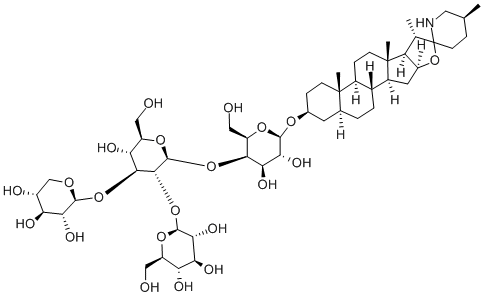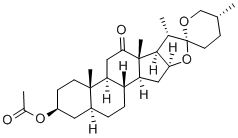n-Docosanol
Synonym(s):1-Docosanol;Behenyl alcohol
- CAS NO.:661-19-8
- Empirical Formula: C22H46O
- Molecular Weight: 326.6
- MDL number: MFCD00002939
- EINECS: 211-546-6
- SAFETY DATA SHEET (SDS)
- Update Date: 2025-12-17 09:49:56

What is n-Docosanol?
Absorption
Topical absorption has been shown to be minimal under conditions reflecting normal clinical use.
Toxicity
Symptoms of overdose include headache, abdominal pain, increased serum lipase, nausea, dyspepsia, dizziness, and hyperbilirubinemia.
Chemical properties
1-DOCOSANOL is white powder
The Uses of n-Docosanol
n-Docosanol is a binder and an emulsion stabilizer. It is also used to increase a formulation’s viscosity. This is a mixture of fatty alcohols. behenyl alcohol may be used for any number of purposes in a cosmetic formulation, including as an emollient, a binder, an emulsion stabilizer, or to increase a product’s viscosity. It may be derived either synthetically or from plants.
The Uses of n-Docosanol
antiviral
The Uses of n-Docosanol
1-Docosanol works as a surfactant in cosmetics. 1-Docosanol cream has also been approved by the US Food and Drug Administration as a safe and effective topical treatment for herpes labialis
Background
Docosanol is a drug used for topical treatment for recurrent herpes simplex labialis episodes (episodes of cold sores or fever blisters). A saturated 22-carbon aliphatic alcohol, docosanol exhibits antiviral activity against many lipid enveloped viruses including herpes simplex virus (HSV). Docosanol inhibits fusion between the plasma membrane and the herpes simplex virus (HSV) envelope, thereby preventing viral entry into cells and subsequent viral replication.
Indications
For the topical treatment of recurrent oral-facial herpes simplex episodes (cold sores or fever blisters).
Definition
1-DOCOSANOL is a long-chain, saturated fatty alcohol.
Indications
Docosanol (Abreva) is a long-chain saturated alcohol
that is clinically effective against HSV. It has in vitro activity
against many enveloped viruses, including CMV,
influenzavirus, and respiratory syncytial virus.
Docosanol is not directly virucidal; instead, it blocks
the entry of the virion into the host cell by inhibiting the
fusion of the viral envelope with the host plasma membrane.
Because it does not affect viral replication or protein
production, it may be less susceptible to the development
of resistance than other antiviral drugs.
General Description
1-Docosanol inhibits replication of certain viruses (herpes simplex virus and respiratory syncytial virus) within primary target cells in vitro. It has been isolated from Clematis brevicaudata.
Flammability and Explosibility
Not classified
Pharmaceutical Applications
1-DOCOSANOL is a 22-carbon straight chain alcohol licensed for over-thecounter sales for the topical treatment of herpes labialis. It is thought to act by blocking viral fusion with the host cell, although definitive studies are lacking. The clinical relevance of the antiviral activity has been debated and the place of this medication as a treatment of herpes labialis remains to be established.
Pharmacokinetics
Docosanol is a saturated 22-carbon aliphatic alcohol which exhibits antiviral activity against many lipid enveloped viruses including herpes simplex virus (HSV). Docosanol speeds the healing of cold sores and fever blisters on the face or lips. It also relieves the accompanying symptoms, including tingling, pain, burning, and itching. Docosanol cannot, however, prevent cold sores or fever blisters from appearing.
Clinical Use
Docosanol cream is approved for the over-the-counter treatment of herpes labialis. It shortens the duration of symptoms of cold sores and fever blisters but does not provide symptomatic relief.
Side Effects
Adverse effects of docosanol are minimal. Skin irritation occurs infrequently. Drug interactions are not anticipated.
Metabolism
Not Available
Purification Methods
Crystallise docosanol from ether or chloroform/ether. [Beilstein 1 IV 1906.]
Properties of n-Docosanol
| Melting point: | 65-72 °C(lit.) |
| Boiling point: | 180 °C0.22 mm Hg(lit.) |
| Density | d75 0.8063 g/ml; d85 0.7986 g/ml; d95 0.7911 g/ml |
| vapor pressure | 0Pa at 25℃ |
| refractive index | n75 1.4360 |
| storage temp. | Store below +30°C. |
| solubility | Chloroform (Slightly), Ethyl Acetate (Slightly) |
| form | Pellets or Tablets |
| pka | 15.20±0.10(Predicted) |
| color | White |
| Water Solubility | Insoluble |
| Merck | 13,3433 |
| BRN | 1770470 |
| Stability: | Stable. Combustible. Incompatible with strong oxidizing agents. |
| CAS DataBase Reference | 661-19-8(CAS DataBase Reference) |
| NIST Chemistry Reference | 1-Docosanol(661-19-8) |
| EPA Substance Registry System | 1-Docosanol (661-19-8) |
Safety information for n-Docosanol
Computed Descriptors for n-Docosanol
n-Docosanol manufacturer
New Products
4,4-Difluoropiperidine hydrochloride tert-butyl 9-methoxy-3-azaspiro[5.5]undecane-3-carboxylate Indole Methyl Resin N-Isopropylurea N,N-Dicyclohexylcarbodiimide(DCC) MELDRUMS ACID 5-METHYLISOXAZOLE-4-CARBOXYLIC ACID Magnessium Bis glycinate Zinc ascorbate 1-bromo-2-butyne 2-acetamidophenol 9(10H)-anthracenone Erythrosin B, 4-Piperidinopiperidine 2-((4-morpholinophenylamino) (methylthio) methylene) malononitrile 2,4-dihydroxybenzaldehyde 3-(4-morpholinophenylamino)-5-amino-1H-pyrazole-4-carbonitrile Methyl 2-methylquinoline-6-carboxylate 2,6-dichloro-4-nitropyridine 4-Bromo-2-chlorobenzonitrile 2-(benzylamino)acetic acid hydrochloride 4-(tert-Butoxycarbonylamino)but- 2-ynoic acid 3,4-dihydro-2H-benzo[b][1,4]dioxepine 1-Phenyl-1-cycloprppanecarboxylicacidRelated products of tetrahydrofuran








You may like
-
 661-19-8 98%View Details
661-19-8 98%View Details
661-19-8 -
 1-Docosanol 98%View Details
1-Docosanol 98%View Details
661-19-8 -
 1-Docosanol 661-19-8 99%View Details
1-Docosanol 661-19-8 99%View Details
661-19-8 -
 1-Docosanol (Behenyl Alcohol) extrapure CAS 661-19-8View Details
1-Docosanol (Behenyl Alcohol) extrapure CAS 661-19-8View Details
661-19-8 -
 1-Docosanol CAS 661-19-8View Details
1-Docosanol CAS 661-19-8View Details
661-19-8 -
 Docosanol (n-Docosanol) CAS 661-19-8View Details
Docosanol (n-Docosanol) CAS 661-19-8View Details
661-19-8 -
 1-Docosanol CAS 661-19-8View Details
1-Docosanol CAS 661-19-8View Details
661-19-8 -
 1-Docosanol CAS 661-19-8View Details
1-Docosanol CAS 661-19-8View Details
661-19-8
